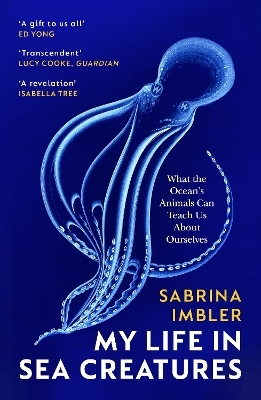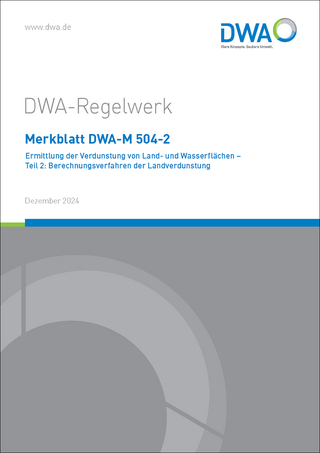
Global Change and Extreme Hydrology
Testing Conventional Wisdom
Seiten
2011
National Academies Press (Verlag)
978-0-309-21768-2 (ISBN)
National Academies Press (Verlag)
978-0-309-21768-2 (ISBN)
Climate theory dictates that core elements of the climate system, including precipitation, evapotranspiration, and reservoirs of atmospheric and soil moisture, should change as the climate warms, both in their means and extremes. A major challenge that faces the climate and hydrologic science communities is understanding the nature of these ongoing changes in climate and hydrology and the apparent anomalies that exist in reconciling their extreme manifestations.
The National Research Council (NRC) Committee on Hydrologic Science (COHS) held a workshop on January 5-6, 2010, that examined how climate warming translates into hydrologic extremes like floods and droughts. The workshop brought together three groups of experts. The first two groups consisted of atmospheric scientists and hydrologists focused on the scientific underpinnings and empirical evidence linking climate variability to hydrologic extremes. The third group consisted of water managers and decision-makers charged with the design and operation of water systems that in the future must be made resilient in light of a changing climate and an environment of hydrologic extremes.
Global Change and Extreme Hydrology summarizes the proceedings of this workshop. This report presents an overview of the current state of the science in terms of climate change and extreme hydrologic events. It examines the "conventional wisdom" that climate change will "accelerate" the hydrologic cycle, fuel more evaporation, and generate more precipitation, based on an increased capacity of a warmer atmosphere to hold more water vapor. The report also includes descriptions of the changes in frequency and severity of extremes, the ability (or inability) to model these changes, and the problem of communicating the best science to water resources practitioners in useful forums.
Table of Contents
Front Matter
Summary
Introduction
Findings
References
Appendixes
Appendix A: Statement of Task
Appendix B: Agenda
Appendix C: Speaker Abstracts
Appendix D: Summary of Presentations
Appendix E: Workshop Participants
The National Research Council (NRC) Committee on Hydrologic Science (COHS) held a workshop on January 5-6, 2010, that examined how climate warming translates into hydrologic extremes like floods and droughts. The workshop brought together three groups of experts. The first two groups consisted of atmospheric scientists and hydrologists focused on the scientific underpinnings and empirical evidence linking climate variability to hydrologic extremes. The third group consisted of water managers and decision-makers charged with the design and operation of water systems that in the future must be made resilient in light of a changing climate and an environment of hydrologic extremes.
Global Change and Extreme Hydrology summarizes the proceedings of this workshop. This report presents an overview of the current state of the science in terms of climate change and extreme hydrologic events. It examines the "conventional wisdom" that climate change will "accelerate" the hydrologic cycle, fuel more evaporation, and generate more precipitation, based on an increased capacity of a warmer atmosphere to hold more water vapor. The report also includes descriptions of the changes in frequency and severity of extremes, the ability (or inability) to model these changes, and the problem of communicating the best science to water resources practitioners in useful forums.
Table of Contents
Front Matter
Summary
Introduction
Findings
References
Appendixes
Appendix A: Statement of Task
Appendix B: Agenda
Appendix C: Speaker Abstracts
Appendix D: Summary of Presentations
Appendix E: Workshop Participants
1 Front Matter; 2 Summary; 3 Introduction; 4 Findings; 5 References; 6 Appendixes; 7 Appendix A: Statement of Task; 8 Appendix B: Agenda; 9 Appendix C: Speaker Abstracts; 10 Appendix D: Summary of Presentations; 11 Appendix E: Workshop Participants
| Erscheint lt. Verlag | 17.12.2011 |
|---|---|
| Verlagsort | Washington |
| Sprache | englisch |
| Maße | 216 x 279 mm |
| Themenwelt | Naturwissenschaften ► Geowissenschaften ► Hydrologie / Ozeanografie |
| Naturwissenschaften ► Geowissenschaften ► Meteorologie / Klimatologie | |
| ISBN-10 | 0-309-21768-7 / 0309217687 |
| ISBN-13 | 978-0-309-21768-2 / 9780309217682 |
| Zustand | Neuware |
| Informationen gemäß Produktsicherheitsverordnung (GPSR) | |
| Haben Sie eine Frage zum Produkt? |
Mehr entdecken
aus dem Bereich
aus dem Bereich
die große Bild-Enzyklopädie mit mehr als 2000 Fotografien und …
Buch | Hardcover (2023)
Dorling Kindersley (Verlag)
59,95 €
what the ocean's animals can teach us about ourselfs
Buch | Softcover (2024)
Vintage (Verlag)
13,70 €
Buch | Softcover (2024)
Deutsche Vereinigung für Wasserwirtschaft, Abwasser und … (Verlag)
214,00 €


